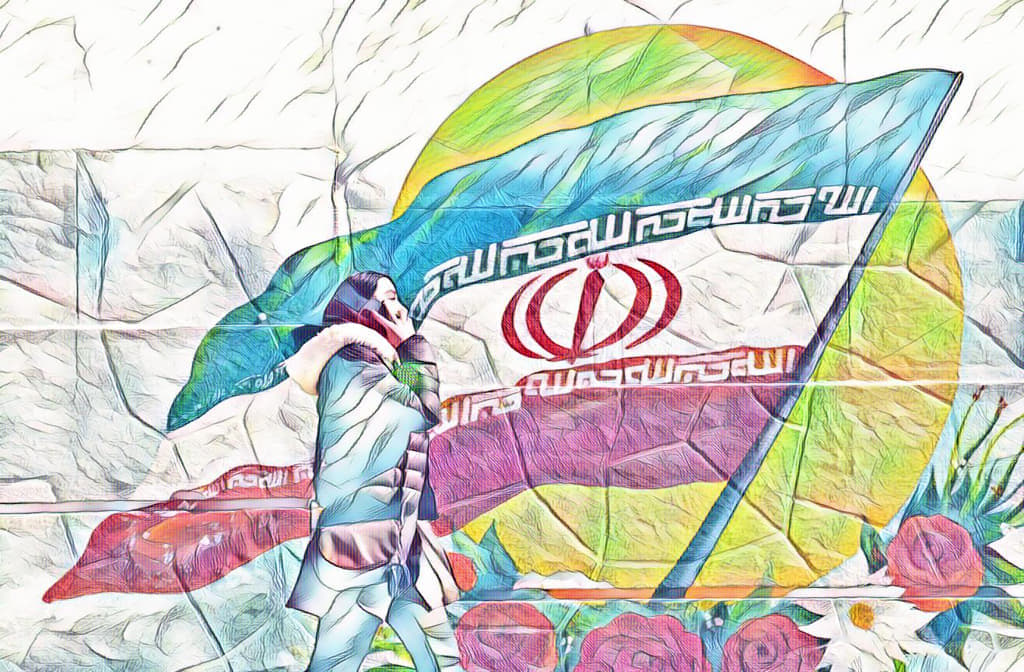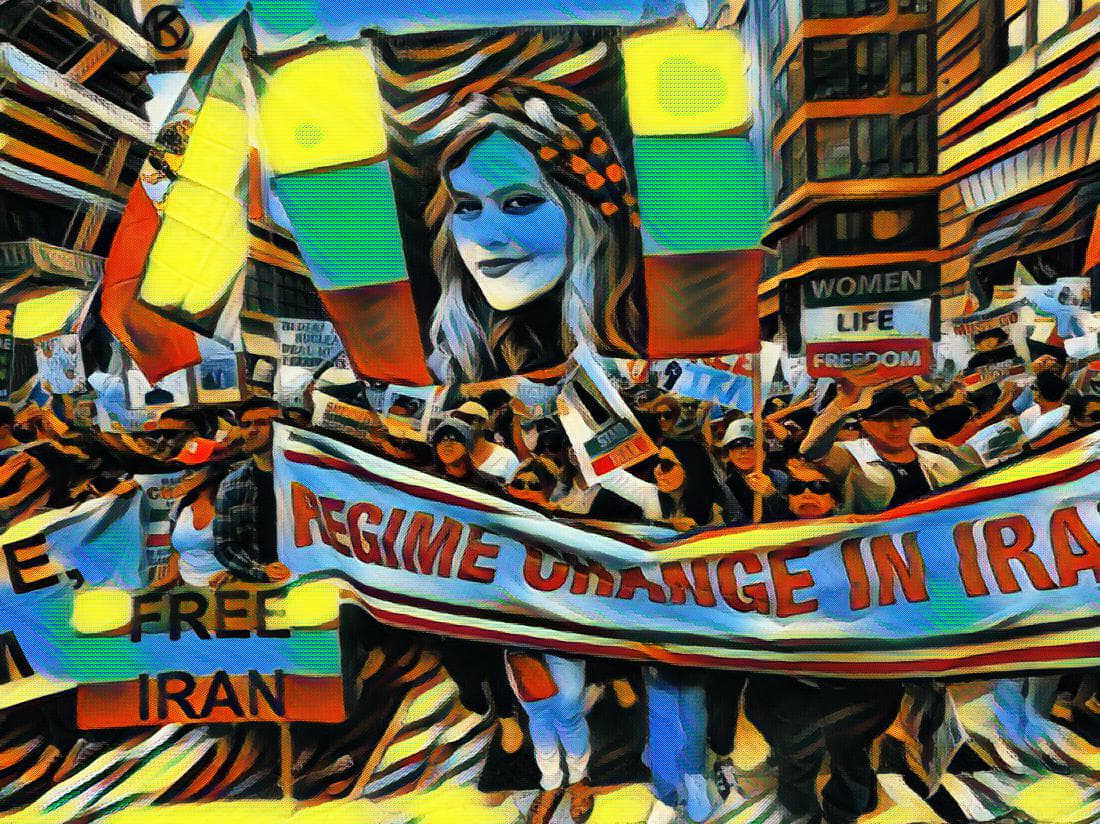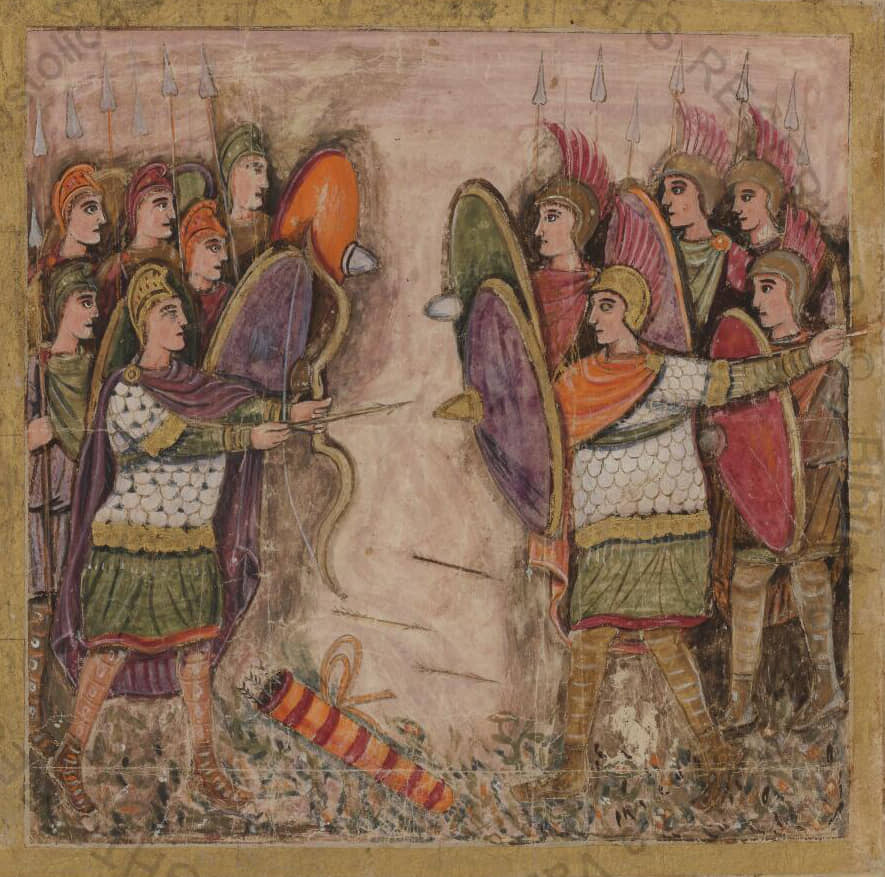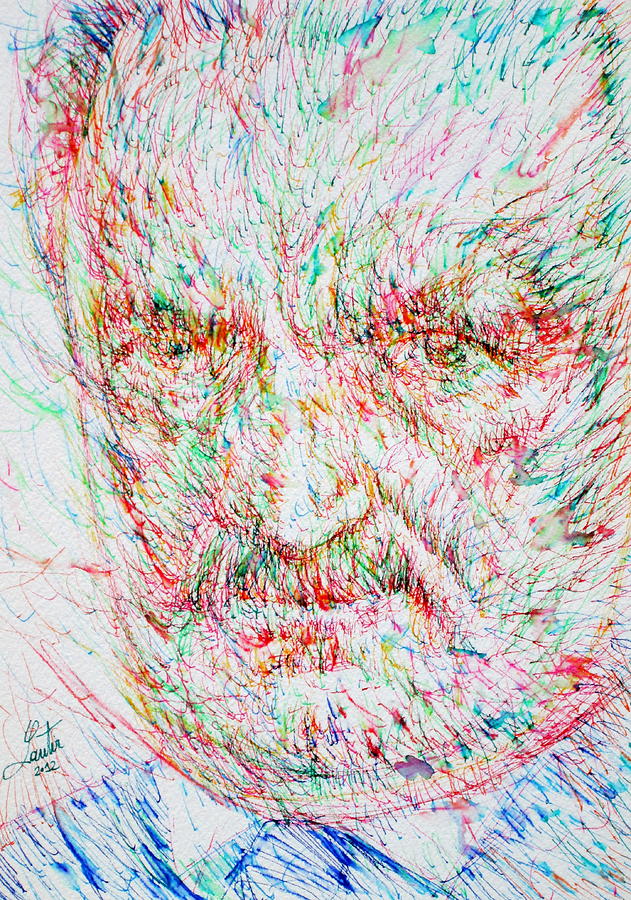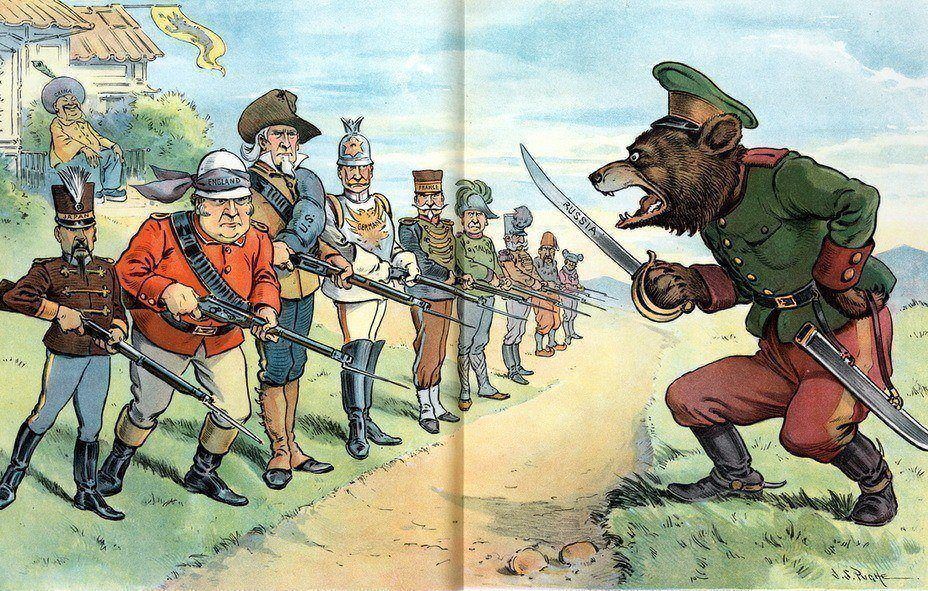Many media outlets write about the effectiveness of Iranian drones on the front lines. The official agenda also increasingly speaks of visits by official delegations or interest in interaction in one industry or another. In mid-December, I made a fairly long trip to Iran, where I was able to see the latest achievements of this country, through meetings and in-depth interviews to assess bilateral cooperation and the prospects for further interaction between Russia and Iran.
I will begin with subjective impressions. The last time I was in Iran was in May 2017. In the intervening time, there have been certain changes that are striking. First, the procedure for entering the country has become much easier. It took me ten minutes to get a visa at the airport and pay the fee. It was given on a small piece of paper that was presented at the control window together with my passport. No stamps were put in the passport. Many premium buildings have sprung up in Tehran. High-rise buildings were being built everywhere, especially in the northern district. The subway has been expanded. In fact, a branch line to Imam Khomeini International Airport has been completed, which will make logistics much easier. There is a lot of traffic at peak hours, which is due to the infrastructure of the capital, which was expanded rather chaotically.
As for the protests, about which the Western media write so much and constantly—they simply do not exist. The so-called “hijab crisis,” which occurred after the death of a Kurdish girl, is just another attempt by the West to bring about a color revolution. Indeed, there were attempts at riots in a number of cities, and even protests took place in Tehran. But now everything is quite calm. As for the hijab: In Tehran, you regularly see girls and women with uncovered heads in all kinds of places—in the streets, in cafes, museums and parks, in bazaars and in stores. Of course, no one is allowed into a mosque without a headscarf. But in other public places women walk quite freely and look happy. No one stops them or represses them. I should add that I have seen women not only with blond hair, but also with blue, with Botox-infused lips, tattoos on the palms and necks, and even with face piercings. So, there is nothing wrong with rights and freedoms in Iran.
More sanctions by the West against a number of Iranian officials is a standard political procedure, where the death of a Kurdish girl was just a pretext for intervention. And how many people suffered from police actions in cities in Germany, France, the USA and other Western countries? Who counted the victims of the arbitrary actions of the authorities in the EU? How many people have been innocently convicted by the U.S. judicial system? And yet no one imposes sanctions against these countries because the concept of sovereignty implies non-interference in the affairs of other states. However, Washington and Brussels believe that they are allowed to do so. In general, the West’s strategy towards Iran is aimed at completely changing its political system, and for this purpose any available mechanisms are used to hit the Islamic Republic of Iran with pin-point strikes.
In the context of current events on December 15, 2022 Iran was expelled from the Commission on the Status of Women by the UN Economic and Social Council (28 votes in favor, 8 against, among them—Russia, which questioned the legitimacy of such a decision, 16—abstained). Iranian officials called the procedure nothing short of clownish, noting human rights violations within the United States, especially against the black population. And the EU sanctions against Iran, which Brussels recently imposed “for human rights violations and drone deliveries to Russia,” were assessed as a blatant act of Iranophobia. The Iranian Foreign Ministry protested, adding that the West is following a double standard by turning a blind eye to what is happening in Palestine, and that the EU will face consequences if it continues to hype Iranophobia.
Incidentally, Iran has also imposed retaliatory sanctions against officials and organizations from Britain, the US and the EU, including the media, NGOs and various companies. We can assume that in the future the West will use any pretext for new sanctions. For example, at the beginning of December in the province of Sistan and Baluchistan, the Sunni Imam Moulavi Abdulhaved Rigi was kidnapped and killed by unknown persons. Some Western media are already trying to present this case to show some kind of guilt of the country’s authorities, since the deceased was a Sunni. But everybody suffers from activities of bandits and terrorists (most of which are deliberately created by Western special services for destabilization of the situation in the country), irrespective of religion and social identity. The Islamic Revolutionary Guard Corps recently claimed to have prevented the attempted assassination of Ayatollah Ahmad Alamolkhoda.
Now for the achievements of Iran. According to the Deputy Minister of Road and Urban Development Mohammad Muhammadi, Iran’s civilian aircraft fleet has increased by 77 aircrafts and now consists of 175 airliners.
Iran is also among the top ten steel producing countries. In 2022, the country produced 2.9 million tons in the first ten months. From March to October, the country exported 5.9 million tons, a 30% increase over the same period the previous year.
The capacity of oil terminals is expanding. The Hark oil storage facility, for example, plans to increase volumes to 4.2 million barrels. Exports of minerals and other mining resources from March to November this year reached more than 30 million tons worth $7.8 billion. Exports of petrochemical products increased by 30% and reached 90 million tons. By the way, one of the Iranian catalysts for the petrochemical industry is also supplied to Russia. Iran produces 60 of all 87 necessary types of catalysts.
China alone accounted for 30% of Iran’s foreign trade in 2022. In addition to petrochemical products, China actively buys steel, liquefied gases (propane, butane), methanol, polyethylene, bitumen, alloys, nuts, saffron and leather products. Trade figures with Africa increased by 39%. Even with the U.S., trade is up nearly 15% over 2021, although the overall numbers are lower than they were in 2019. Meanwhile, medicines from the U.S. go to Iran through third countries, particularly the UAE. And from Iran to the U.S., all exports are limited to what passengers buy and bring in. Tehran does not seem to care much about the U.S. market, which is being replaced by other countries.
It should be added that Iran itself follows the principle of economy mokavemati (resistance), the doctrine of which the Supreme Leader of Iran previously presented as a response to pressure from the West. It is based on the principle where the basis of the economy is the social unit; then comes the local level, then the regional and then the national level. The processes of the global economy are the very last concern. This approach allows Iran to rely on its own strength and not be dependent on foreign markets. Judging by the economic boom in the country, this model has turned out to be effective and efficient. Moreover, its goals are the eradication of poverty and the provision of assistance to the poor.
But Iran has made great strides beyond the export of raw materials. In the engineering and maintenance sector, exports rose by 41% to $260 million. In knowledge-intensive products, Iran ranks 15th in the world and leads the region. The country has a total of 8,735 companies in this field and 51 science and technology parks. The budget for research and development is about $80 million. The indicators related to foreign investments in Iran are interesting. For example, this year half of all investments in Iran came from the citizens of Afghanistan. For example, in Khorasan Razavi province the share of Afghan capital is about one billion dollars. This phenomenon is partly connected with the Taliban coming to power in Afghanistan, which forced many businessmen to leave the country. At the same time, a dialogue is now being established with the Taliban government, where bilateral trade and the use of Iran as a transit is an important point in the negotiation process. Earlier, Afghanistan said it was interested in exporting its coal to Iran.
Domestic consumption is also growing. In particular, domestic and commercial gas consumption is expected to grow from 600 million cubic meters per day to 650. This means that the domestic economy is developing, despite external sanctions and pressure. This is confirmed by the abundance of advertising on Iran’s central and regional TV channels—and all the advertised products, with a few exceptions, from household chemicals to motorcycles and cars are locally produced.
Relations with Russia are also actively developing. If five years ago only international relations specialists and experts knew about the EAEU and Eurasian integration, now ordinary newspapers regularly provide information about it. In particular, the Iranian media write that the terms of accession to the free trade zone with the Eurasian Economic Union have been agreed upon. The contract is 150 pages long and includes more than 7500 types of goods and services. Russia is Iran’s main partner in the EAEU with a turnover of more than $1.4 billion. In 2021 Iran’s trade with the EAEU increased by 73% compared with 2020. The creation of an additional railway branch of the North-South transport corridor is being discussed. Although there is also talk of creating a canal that would connect the Caspian Sea and the Persian Gulf.
In addition to official data, information is leaking out about the intensification of cooperation on other fronts as well. Thus, the U.S. media, citing Israeli intelligence, reported that Iran and Russia are negotiating the training of Iranian sailors and the production of warships in Russia. Previously, Iran had asked China for help with shipbuilding, but Beijing hesitated. The current relationship between Moscow and Tehran is conducive to the widest cooperation, so the chances of this project being realized are great. Incidentally, Admiral Tangsiri, commander of the IRGC naval forces, recently stated that “the United States cannot even imagine what kind of missiles Iran already has.” He added that Iran is the only one with small boats no more than 8 meters long equipped with missiles. This is a reflection of the “swarm strategy” adopted by Iran some fifteen years ago to use small and mobile vessels as well as drones against bulky and large enemy ships. Potential targets for Iran are U.S. aircraft carriers and destroyers in the Persian Gulf.
As for the assessment of a special military operation in Ukraine, Iranians differ in their opinions. And this is due to the lack of awareness of the background of the events that unfolded in Ukraine after the coup d’etat in 2014—although there is a common understanding of the aggressive role of the United States and NATO.
I had a discussion with representatives of scientific, intellectual, and ideological circles in Iran about the Ukrainian conflict. I tried to explain to them the background of the war in Ukraine with a historical and metaphysical context. And when there was a follow-up question as to why this war is not only just for the Russians, but also holy, since Russia does not defend itself as it did in 1812 and 1941, I had to make an additional excursus, for which my interlocutors expressed their gratitude.
The fact is that holy war is translated as jihad, and in this context, for Muslims, their own understanding immediately emerges. First, there are differences between Shiite and Sunni fiqh (religious law). Second, there are also differences between classical and modern Shiite fiqh. But there are also common grounds, for example, in Shi’a and Sunni jihad is also a religious obligation (along with prayer, fasting, hajj, and charity). However, the Shiites have an important caveat that the imam must be of good moral character; without this, jihad would be illegitimate. Both Sunni and Shiite jihad is both defensive and offensive in nature. However, modern Shiite theologians such as Ayatollah Mortada Motahhari and Ayatollah Salehi Najafabadi interpret the ayats to mean that jihad can only be defensive in nature, since we are now in the era of the hidden Imam. But there are reservations here as well. For example, Ayatollah Khomeini pointed out that in addition to the prerogative of the Vilayati Fatih (guardian-type sovereignty held by the supreme leader of Iran for the duration of the hidden Imam), other theologians can also give the right to conduct offensive jihad. But Ayatollah Golpaigani of Qom Seminary argued that offensive jihad is the exclusive prerogative of the impeccable Imam and his authorized representative.
While contemporary Shi’a interpretations of offensive jihad differ, the opinion on defensive jihad is unanimous. Here the permission of the irreproachable Imam is not needed, and it represents a response to an enemy attack against Muslims with the intention of seizing their property and subjugating their lives. In such a case, the obligation to wage defensive jihad falls on all who can fight, regardless of gender or age. This is the context in which the Iranians interpret the special military operation in Ukraine.
With these aspects in mind, we need to have a carefully constructed system of arguments to polemicize with those forces in the Muslim world who promote the thesis that “Russia is not waging a defensive war” and question the justice of its actions. Therefore, we need more explanatory work in this direction—as well as strengthening cooperation in information exchange and jointly countering disinformation and hybrid operations of the West against our countries. And, of course, the Iranian experience of economic development under harsh sanctions will also be useful.
Leonid Savin, is Editor-in-Chief of the Geopolitika.ru Analytical Center, General Director of the Cultural and Territorial Spaces Monitoring and Forecasting Foundation and Head of the International Eurasia Movement Administration. This article appears through the kind courtesy of Geopolitika.
